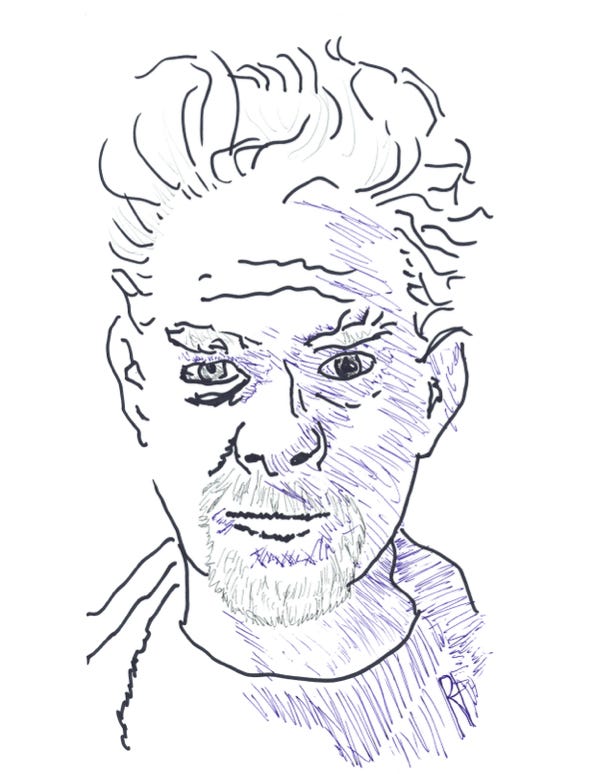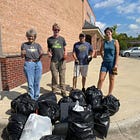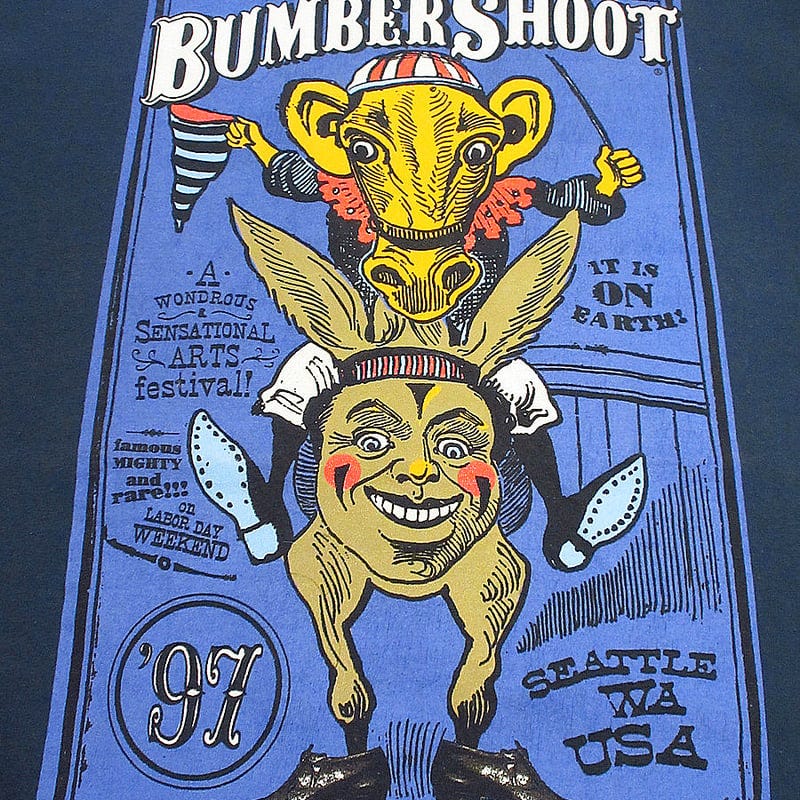
My first-ever binge watch was in the summer of 1993. My best friend / roommate and I sat down with a stack of VHS tapes and watched both seasons of Twin Peaks in one weekend. He was employed as an AV tech at the University, I think, and I had saved enough money to take the summer completely off before graduate school (or I thought I had).
“There’s Nothing Quite Like Urinating in the Open Air”
Right after school let out for my friend from the campus Sierra Club, she and I took a camping trip to a state park in Tennessee, where she had set up a volunteer gig for us clearing trails a few hours a day so we could stay for free. This was my first and only time wearing snake armor, a set of hard plastic greaves connected by nylon straps that went on my shins, over top of my pants. Much less cool than it sounds.
The Ranger was impressed with my farm-boy hand-tool skills and offered me a job for the summer, which I probably should have taken, given that twelve weeks of drinking and watching movies at the Kentucky Theatre downtown every day or two would leave me with less than $400 to move to Rochester on. I ended up dodging security guards and sleeping under my desk at the hospital until I could find an apartment where I did not have to pay an extra month’s rent as a security deposit.
The woman who had the apartment already had three cats and three parrots. She probably just considered me one more stray. We were soon joined by this guy from Seattle, who had just left a job with Microsoft, so he had a much better financial cushion than mine. He took the whole third floor of the house (just an attic really) while we split the second floor. We all shared the kitchen. This cost us $200 a month, each, utilities included.
Later his girlfriend — who was like the heir to some Pacific Northwest department-store fortune? — moved in. She was a knitter. I still have a pair of mittens she made for me, beautifully gray and purple (dyed with concentrated Kool-Aid).
The Seattle back-and-forth continued when the med student / volleyball player who lived down on the first floor transferred during our second year. Her replacement, who worked in a local bookstore, also ran away to Seattle a year later. I visited that one a couple times for music festivals and such
before eventually impregnating and then finally marrying her.
It’s about time, my grandmother said. I assume she was referring to the second of those events and not the first, but as she is dead I have no way of knowing for sure.
Or do I? See Look Into My Eyes below.
On one of those Seattle trips we drove up through the Snoqualmie Pass to see the waterfalls and visit The Great Northern Hotel, which featured prominently in Twin Peaks. We couldn’t afford to stay there, but we did get a couple of slices of pie to go at the Double-R Diner in North Bend before continuing down the other side of the Rockies to the town of Roslyn, where they filmed many of the outdoor shots for Northern Exposure, another favorite show from the 90s — equally quirky and interested in the unconscious, but much less dark than any of Lynch’s work that I’ve seen.
We had a nice lunch at the Brick but were too timid to ask why all the locals had empty SPAM cans tied around their necks with twine.
The Art Life
These reminiscences are very much the flavor of a David Lynch biopic I watched on Friday night after I heard about his death, except that David Lynch had a larger and more interesting life than I have had so far. I had no idea that he was a painter, much less that he started doing it as a teenager and continued throughout his long life. I didn’t much like most of the stuff they showed in the film, at least not at first glance. He was clearly interested in the tactile aspects of working with physical materials. He liked to smear things with his gloved hands. He liked to stick found or hand-made objects into the gooey paint for 3D effects.
I was especially intrigued by the fact that Lynch first got into film through animation, through the idea of a painting that could move. Throughout the 80s and into the 90s he did a new-to-me comic strip called The Angriest Dog in the World.
And in 2002 he did an equally new-to-me 8-part web animation called Dumbland.
"Animation is a magical thing to me. I veered off pretty quickly into live action, but I like animation, and I like Flash."
This short film is one of my personal favorites.
Perhaps the thing I liked and respected most about David Lynch as an artist throughout my experience of him was that his darkness (and there was a lot of it) was contained in the art. As far as I’ve ever been able to tell, it did not leak out into his adult life and his relationships with real-world people.
Here’s an interview between Lynch and NPR’s Rachel Martin, where among other things he describes transcendental meditation and a psychosomatic disorder he had as a teenager, which he calls “spasms of the intestines.” It’s structured as a game, where the questions she asks are drawn randomly from a deck of cards. At this point, after a solid month of solo RPG coverage, I’m sure you can imagine how this might appeal to me. I find it especially funny that Lynch is clearly just humoring Rachel Martin with her artificial game-like structure.
(Also, his dad was a researcher for the Department of Agriculture?)
I’m much less familiar with transcendental meditation than I am with some other forms, but it seems to have helped him.
“the events of our lives may stay the same,
but how we go through them will certainly change”
In other words, our own reactions to life’s events determine how much we suffer, at least as much as the events themselves. Psychologist George Bonanno (also a painter!) is careful to call adverse events only potentially traumatic.
Look Into My Eyes
Another fascinating film from A24 interviews several psychics and mediums as well as sitting in on their sessions with clients. It was striking how almost all of the psychics were frustrated artists and performers. Despite the phrase con artist, I had never before seriously considered that kind of deception as an art form. In media like Harry Price: Ghost Hunter (2015) or the more recent Nandor Fodor and the Talking Mongoose (2023) there are varying degrees of character reaction from contempt to a confused and grudging respect, maybe even a rueful aesthetic appreciation, but nobody celebrates a faker. Now that I do think about it, that seems strange, because all art involves some level of deception and some level of audience participation. In science fiction we call this dynamic a suspension of disbelief.
One of the taglines in the preview was something like,
Is It Fake? Is It Real? Does it Matter?
I met with my spring independent study for the first time on Friday. She is especially interested in the placebo effect, which I wrote about eight years ago for IGMS but haven’t followed up on since then. Expect some kind of deeper dive on that topic here at some point this semester.
But next week we’ll be back in the pseudo-medieval town of Gosterwick.









An appreciation from a fellow Spokaner whose new book I am rather curious about.
"The Swamp was known as a former hang-out of the film director David Lynch — a story that I am fairly certain is not true. But you and I both know that it doesn’t matter if stories are actually true if people want them to be."
https://leahsottile.substack.com/p/55-owls-still-not-what-they-seem